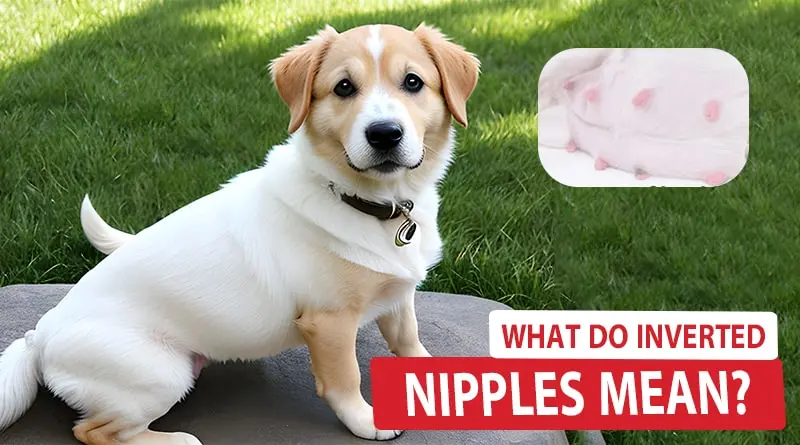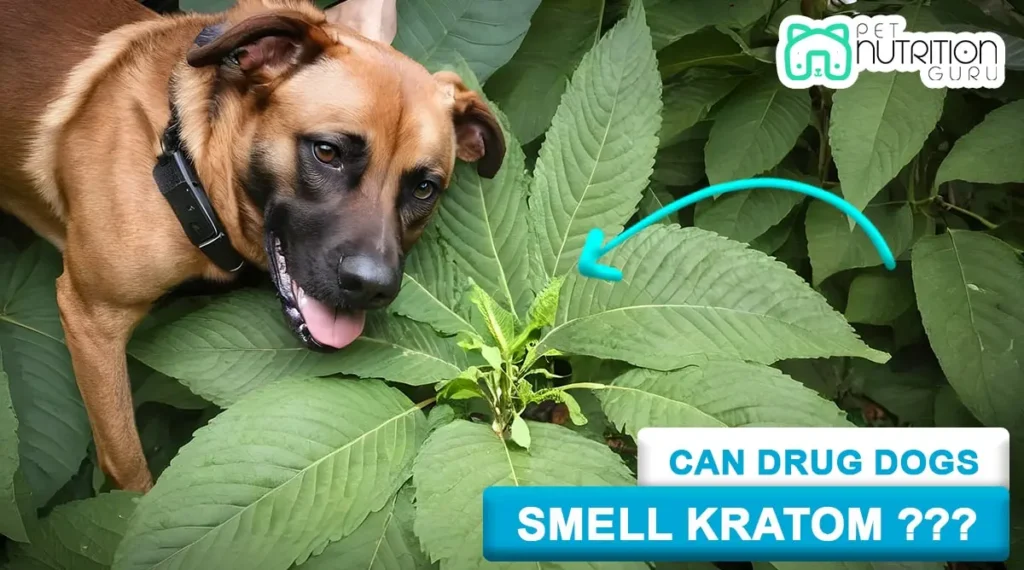Inverted nipples, though not uncommon in dogs, can raise questions for concerned pet owners. Understanding how to identify and handle this condition is crucial for your furry friend’s well-being. Here is the true and short answer to Inverted Nipple on Dogs:
How to Recognize and Manage Inverted Nipple on Dogs?
“An inverted nipple is a nipple that means inwards or lies washed against your Dog’s Belly. Inverted nipples are extremely common in Dogs. This condition arises more often in pregnant or nursing Puppies. An Inverted Nipple is usually only a cosmetic problem but can be a health issue in some Dogs.”
Topic Information
Inverted Nipples Definition Dog's nipples turned inward. Common and usually not concerning.
Causes of Inverted Nipples Genetics, hormonal changes, pregnancy, medical conditions.
Surgery for Inverted Nipples? Unnecessary unless causing discomfort or affecting quality of life.
Nipple Appearance Normalcy Variations common; focus on comfort and health.
Reverting to Normal State Possible after hormonal changes; natural for some dogs.
Cleaning Inverted Nipple Gently clean with mild, pet-safe cleanser and warm water. Monitor for changes.
Health Concerns with Inversion Typically not a problem; consult if sudden changes or discomfort.
Conclusion Inverted nipples often natural. Monitor for changes and consult vet if concerned.
In this Article (Inverted Nipple on Dogs), we’ll explore the various aspects of Inverted Dog Nipple and Guide you in detail with our knowledge.
What Do Inverted Nipples Mean?

Inverted nipples in dogs are a condition where a dog’s nipple is turned inward instead of outward.
Unlike humans, inverted nipples in dogs are pretty common and usually not a cause for significant concern. They may occur naturally or develop over time due to various factors.
Here is the more popular Question: “What Happens if a Dog Eats Too Many Dentastix?“
Why Does My Dog Have an Inverted Nipple?
A range of factors can cause inverted nipples in dogs. One of the most common reasons is genetics. Some dogs are born with inverted nipples, and this trait can be passed down through generations.
Hormonal changes, pregnancy, or even certain medical conditions can also contribute to developing inverted nipples in dogs.
Here’s a more detailed explanation with additional points:
1. Genetic Influence:
Inverted nipples in dogs can be primarily attributed to genetics. Certain breeds have a higher predisposition to this trait.
If a dog’s parents had inverted nipples, there’s a greater likelihood that their offspring will exhibit the same characteristics. This genetic influence is significant when understanding why a dog may have inverted nipples.
2. Hormonal Fluctuations:
Hormonal changes play a crucial role in developing inverted nipples. During significant life stages such as puberty, pregnancy, and lactation, a dog’s hormonal levels experience substantial shifts.
These Hormonal Fluctuations can impact the mammary glands, potentially leading to the inversion of the nipples. It’s a natural response of the body to prepare for lactation.
3. Pregnancy and Nursing:
Pregnancy is a pivotal time for a dog’s mammary glands. As the body prepares for lactation, the mammary tissue undergoes extensive changes. This process can result in temporary alterations in the appearance of the nipples, including inversion.
After nursing, when hormonal levels return to a non-pregnant state, the nipples often revert to their normal position.
4. Post-Surgical Effects:
In some rare instances, previous surgeries near the mammary area can lead to changes in nipple structure.
This could be due to scarring or alterations in the underlying tissue. It’s important to consider past medical procedures when determining the cause of inverted nipples.
5. Medical Conditions and Injuries:
While less common, specific medical conditions or injuries can contribute to nipple inversion. Diseases affecting the mammary glands or damage to the nipple area can potentially lead to this phenomenon.
These cases may require closer veterinary attention to address the underlying health issue.
6. Natural Variation:
It’s crucial to emphasize that inverted nipples in dogs are often a natural variation. They are usually not a significant cause for concern unless they cause discomfort or impact the Dog’s quality of life.
For many dogs, inverted nipples are a normal part of their physical makeup.
7. Monitoring and Maintenance:
Regularly monitoring your Dog’s nipples, particularly inverted ones, is essential. This helps ensure they remain healthy and free from any signs of infection or discomfort.
Keeping the area around the inverted nipple clean is essential to prevent potential infections.
Here is the Most Popular Question: “Do Cats Get Depressed after Abortion?“
Causes of Inverted Dog Nipple

Inverted nipples in dogs can result from various factors, and understanding these causes can help pet owners confidently navigate this condition.
Here are some common reasons for inverted dog nipples:
- Genetics
- Hormonal Changes
- Pregnancy and Nursing
- Mastitis and Nipple Appearance
- Tumors or Growth
- Trauma or Injury
- Age-Related Changes
- Certain Medical Conditions
- Lactation Issues
- Post-Surgical Effects
Understanding the potential causes of inverted nipples in dogs is essential for providing appropriate care and addressing any underlying health concerns.
If you notice any sudden or concerning changes in your Dog’s nipples, consulting a veterinarian is recommended for a proper evaluation and guidance on the best course of action.
Here is the Most Popular Question: “My Dog Ate Contact Lens: How to React?“
Should I Fix My Dog’s Inverted Nipple?
In most cases, there is no need to correct an inverted nipple in a dog surgically. Unless the inverted nipple is causing discomfort or interfering with your Dog’s quality of life, it’s generally considered a natural variation and not a cause for concern.
Why Does My Dog’s Nipple Look Weird?
It’s important to remember that what might seem ‘weird’ to us doesn’t necessarily mean it’s abnormal for a dog. Dogs, like people, come in all shapes and sizes, and this applies to their nipples too.
If you notice a sudden change in your Dog’s nipples or if they seem to be causing discomfort, it’s a good idea to consult a veterinarian.
Here are some potential reasons why a dog’s nipple might appear different:
- Skin Conditions
- Natural Variation
- Inverted Nipples
- Lumps or Bumps
- Injury or Trauma
- Hormonal Changes
- Age-Related Changes
- Infections or Irritation
- Post-Pregnancy Changes
Here is the more popular Question: “Is Witch Hazel Safe for Cats?“
What Should Inverted Nipples Look Like?
Inverted nipples are characterized by the nipple being turned inward instead of protruding out. They may be flat against the skin or slightly indented. This can be a perfectly normal variation for many dogs.
What’s most important is that the nipples are not causing any discomfort or health issues for your pet.
Will My Dog’s Nipples Go Back to Normal?
In some cases, especially after hormonal changes like pregnancy or nursing, a dog’s nipples may return to normal.
However, for dogs with naturally inverted nipples, this is their normal state and does not require correction.
Here are some major points:
- If your Dog’s nipples have always been inverted, it’s likely a natural variation.
- This trait is generally not a cause for concern unless it’s causing discomfort or affecting your Dog’s quality of life.
- Surgical correction is usually unnecessary for dogs with naturally inverted nipples.
- If you have concerns about your Dog’s nipples or notice sudden changes, consulting a veterinarian is advised.
- They can evaluate properly and offer guidance based on your Dog’s situation.
How to Clean an Inverted Nipple in My Dog?
If your Dog has an inverted nipple, keeping the area clean is important to prevent any potential infections. Gently clean the area around the nipple with a mild, pet-safe cleanser and warm water.
Pat the site dry with a clean towel and monitor for any redness, swelling, or discharge symptoms.
Steps Instructions
Gather Supplies: Mild pet-safe cleanser, warm water, soft towels or cotton balls.
Prepare Cleaning Solution: Mix cleanser with warm water (well-diluted and pet-safe).
Restrain & Comfort Dog: Calmly restrain; use treats and soothing words for reassurance.
Dampen Cloth or Cotton: Use damp cloth or cotton ball in cleaning solution.
Gently Clean Area: Wipe around inverted nipple with gentle pressure.
Pay Attention to Hygiene: Clean surrounding skin to prevent infections.
Rinse Thoroughly: Use damp cloth or cotton ball to remove residue.
Pat Dry: Gently pat area dry with soft towel.
Monitor for Discomfort: Watch for irritation; consult vet if needed.
Repeat as Necessary: Follow vet's recommendations for regular cleaning.
Here’s a step-by-step guide on how to do it safely and effectively:
1. Gather Supplies:
- Mild, pet-safe cleanser (like a vet-approved skin cleanser or mild soap)
- Warm water
- Clean, soft towels or cotton balls
2. Prepare a Cleaning Solution:
Mix the mild cleanser with warm water. Ensure it’s well-diluted and safe for pets.
3. Restrain and Comfort Your Dog:
Gently restrain your Dog in a comfortable and calm environment. Use treats and soothing words to reassure them.
4. Dampen a Cloth or Cotton Ball:
Dip a clean cloth or cotton ball into the cleaning solution. Make sure it’s not too wet to prevent excess moisture.
5. Gently Clean the Area:
Gently wipe around the inverted nipple, ensuring you reach all sides. Be careful not to apply too much pressure, as this area can be sensitive.
6. Pay Attention to Hygiene:
Ensure that you clean not just the nipple but the surrounding skin. This helps prevent any potential infections.
7. Rinse Thoroughly:
Rinse the area with a clean, damp cloth or cotton ball to remove any residue from the cleanser. Make sure no soap is left behind.
8. Pat Dry:
Use a soft, clean towel to pat the area dry. Avoid rubbing, as the skin around the nipple can be delicate.
9. Monitor for Discomfort or Redness:
After cleaning, observe your Dog for discomfort, irritation, or redness. If you notice any, consult a veterinarian promptly.
10. Repeat as Necessary:
Depending on your Dog’s specific needs, you may need to clean the inverted nipple regularly. Follow your veterinarian’s recommendations.
Here is the more popular Question: “Why Does My Dog Keeps Stretching Neck and Looking Up?“
Important Tips to Clean an Inverted Nipple:
- Always use a pet-safe cleanser, as human products may include elements that can harm dogs.
- Be gentle and patient. This area can be sensitive, and your Dog may be apprehensive. Provide plenty of reassurance and treats.
- Consult your veterinarian if you need more clarification about any part of the cleaning process.
Are Inverted Nipples in Dogs a Health Problem?
In most cases, inverted nipples in dogs are not a health problem. However, if you see any sudden changes in the appearance or condition of your Dog’s nipples or if they seem to be causing discomfort, it’s always best to consult your veterinarian.
Conclusion
Inverted Nipple on Dogs is usually a natural variation, not a cause for concern. Understanding what is Safe for your dog and keeping an eye on any changes can help secure your furry friend’s happiness and health.
Remember, if you have any doubts or concerns, it’s always a good idea to consult your veterinarian.
Disclaimer
This Article (Inverted Nipple on Dogs) contains essential information. We are not a veterinarian but we have pet Dog dietary professionals. If your Dog discloses any indication of ailment, call your veterinarian.
Bear in mind that every Dog is Different, and if you have any worries regarding your Canine’s health or practices, do not wait to seek specialist recommendations from your veterinarian.
If you want more Knowledge about Pet Nutrition, visit our Blog Section.
FAQs (Frequently Asked Questions)
In some cases, they may return to normal, but for naturally inverted nipples, no correction is needed.
They are usually present from birth, but if they suddenly change, consult a vet.
Latest Articles
- Can Dogs Eat Soursop Fruit? Find Out the Truth Here
- Can Drug Dogs Smell Kratom? The Shocking Truth Revealed
- When Do Dogs Go into Heat after Having Puppies?
Subscribe to Pet Nutrition Guru
Subscribe below to receive expert pet care advice, pet wellness tips, and exclusive promotions.




